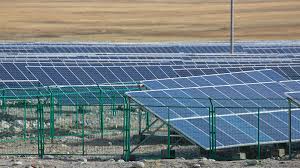
The photovoltaic mounting system market revenue for 2022 was valued at US$ 22 million. The market is estimated to reach US$ 123.59 million by 2033, as it is expected to grow at a CAGR of 17.6% from 2023 to 2033. Different cooling mechanisms are associated with different solar mounting structures. In comparison to solar panels installed on the roof, ground-mounted panels will experience better airflow, allowing them to cool off more easily, which impacts efficiency and temperature control.
Photovoltaic mounting systems are becoming more modular and lighter, making them easy to install and maintain. A variety of orientations, roof angles, and roof types can be accommodated with these systems, which are often made of aluminum or steel. In addition to its high flexibility, this type of system can also be configured with additional components, including batteries, trackers, and energy storage systems. Energy production and other performance metrics can also be tracked with these systems, which come with integrated monitoring systems.
Energy consumption around the world is on the rise. Based on a study by Our World in Data, a research group housed at Oxford University, the current annual global primary energy consumption is over 160,000 TWh, which is a significant amount when compared to previous years. Only 585 TWh of electricity is generated by solar energy each year. While renewable energy solutions, investments, and usage are rising, the primary sources of global energy remain oil, coal, and gas, accounting for more than 80% of global energy consumption.
Mounting systems for photovoltaic panels have a bright future. PV systems are expected to become more popular as renewable energy and solar energy costs fall. Due to continued price decreases, PV systems have become more affordable, increasing sales in the market. Moreover, global initiatives aimed at reducing carbon emissions and focusing on a more sustainable energy mix will also encourage further growth in the market for solar panels.
Driving Factors for Photovoltaic Mounting Systems
The adoption and advancement of renewable energy sources has grown immensely, with solar panels being among the most adopted form of renewable energy. Attributing to this, the rising number of solar projects are estimated to be primary driving factor for the growth in demand for Photovoltaic mounting systems.
Global PV mounting system market growth witnessed substantial dip in Y-o-Y growth in the year 2020, owing to the nationwide lockdowns and supply chain interruptions caused by COVID-19 Pandemic. Which has stopped few sunlight-based undertakings and significantly affected the business tasks across few nations. So, an enormous interest supply hole is developing, which will influence the development of the different areas, including sunlight.
Around 26% to 27% of global Solar photovoltaic Mounting System capacity grew in 2017, and the number is rising, as is evidenced by the increase in demand for structural components for rising solar capacity.
As such, the interest for cost-effective force is developing too. Expanded interests in inexhaustible assets and a usually bright environment for a more significant part of the year have prompted the acknowledgment of sun-based energy as the best option in contrast to familiar fuel sources.
Driving Demand for Photovoltaic Mounting Systems
The adoption and advancement of renewable energy sources has grown immensely, with solar panels being among the most adopted form of renewable energy. Attributing to this, the rising number of solar projects are estimated to be primary driving factor for the growth in demand for Photovoltaic mounting systems.
Global PV mounting system market growth witnessed substantial dip in Y-o-Y growth in the year 2020, owing to the nationwide lockdowns and supply chain interruptions caused by COVID-19 Pandemic. Which has stopped few sunlight-based undertakings and significantly affected the business tasks across few nations. So, an enormous interest supply hole is developing, which will influence the development of the different areas, including sunlight.
Around 26% to 27% of global Solar photovoltaic Mounting System capacity grew in 2017, and the number is rising, as is evidenced by the increase in demand for structural components for rising solar capacity.
As such, the interest for cost-effective force is developing too. Expanded interests in inexhaustible assets and a usually bright environment for a more significant part of the year have prompted the acknowledgment of sun-based energy as the best option in contrast to familiar fuel sources.